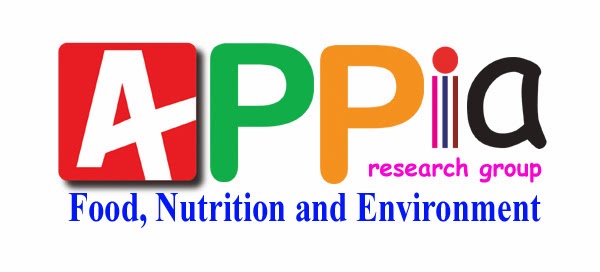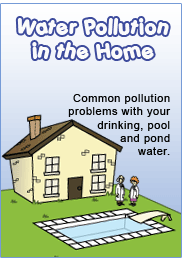Tuesday, January 28, 2014
Sunday, January 19, 2014
Different Types of Chemistry
Fundamentally, chemistry is the study of matter and change. The way that
chemists study matter and change and the types of systems that are studied
varies dramatically. Traditionally, chemistry has been broken into five main
subdisciplines: Organic,
Analytical,
Physical,
Inorganic,
and Biochemistry.
Over the last several years, additional concentrations have begun to emerge,
including Nuclear chemistry, Polymer chemistry, Biophysical chemistry,
Bioinorganic chemistry, Environmental chemistry, etceteras. All of these areas
of chemistry are addressed in our classes here at UW-L to some extent, and by
the research interests
of our faculty in the Chemistry Department. The following descriptions of the
five major subdisciplines were written by several of our faculty members in
their field of expertise. All of our faculty members
would be happy to elaborate, and/or discuss other aspects of chemistry that are
not described below!
Thursday, January 16, 2014
Questions and Answers
:: General
Aptitude
|
:: Medical /
Science
|
:: General Knowledge
|
:: New Sections
|
Tuesday, January 14, 2014
ওজন কমায় পানি !
পানির অপর নাম জীবন এ কথা আমরা সবাই জানি । আসলেই পানির গুনাবলী বলে শেষ
করার নয় । যারা শরীরের স্থূলতা নিয়ে চিন্তিত তাদের এই চিন্তা থেকে মুক্তি
দিতে পারে পানি।
বয়স কমাতে পানি
আপনারা হয়তো ভাবতে পারেন উটের সাথে আমার কিছুটা মিল রয়েছে। কারণ উটের মত
আমিও পানি ছাড়া অনেকক্ষণ থাকতে পারি। সারাহ্ স্মিথ এভাবেই তার লেখাটা শুরু
করেন।
ডাবের পানি, কেন খাবেন?
ডাবের ভেতরের স্বচ্ছ ও সুপেয় পানি নিয়ে আমাদের কৌতুহলের শেষে নেই। আসুন জেনে নেই ডাবের কিছু উপকারিতা ও অপকারিতা-
ওজন কমাবে পানি
শরীর সুস্থ রাখার পাশাপাশি ওজন কমানোর ক্ষেত্রেও সহায়ক ভূমিকা রাখে পানি
সুস্থ থাকার জন্য দিনে আট থেকে দশ গ্লাস পানি খাওয়ার পরামর্শ দিয়ে থাকেন
বিশেষজ্ঞরা।
খালি পেটে পানি পান!
Sunday, January 12, 2014
Denitrification
Denitrification is an ecological approach that can be used to
prevent the leaching of nitrates in soil, this in turn stops any ground
water from being contaminated with nutrients.
Ozone wastewater treatment
Ozone wastewater treatment is a method that is increasing in
popularity. An ozone generator is used to break down pollutants in the
water source.
Septic tanks and sewage treatment
Septic tanks treat sewage at the place where it is located, rather
than transporting the waste through a treatment plant or sewage system.
Septic tanks are usually used to treat sewage from an
individual building.
Industrial water treatment
Before raw sewage can be safely released back into the environment,
it needs to be treated correctly in a water treatment plant. In a water
treatment plant, sewage goes through a number of chambers and chemical
processes to reduce the amount and toxicity of the waste.
What Can You Do?
If you want to help keep our waters clean, there are many things
you can do to help. You can prevent water pollution of nearby rivers and
lakes as well as groundwater and drinking water by following some
simple guidelines in your everyday life.
Environment
There are many different types of water pollution and all have a different adverse effect on the environment.
- Heavy metals from industrial processes can accumulate in nearby lakes and rivers. These are toxic to marine life such as fish and shellfish, and can affect the rest of the food chain. This means that entire animal communities can be badly affected by this type of pollutant.
Economy
Water pollution can be damaging to the economy as it can be
expensive to treat and prevent contamination. Waste that does not break
down quickly accumulates in the Earth’s waters and eventually makes
its way to the oceans.
Water pollution can be prevented by stopping pollutants from contaminating nearby waters. There are a number of water treatments to prevent pollution such as:
Water pollution can be prevented by stopping pollutants from contaminating nearby waters. There are a number of water treatments to prevent pollution such as:
Health
Virtually all types of water pollution are harmful to the health of
humans and animals. Water pollution may not damage our health
immediately but can be harmful after long term exposure. Different
forms of pollutants affect the health of animals in different ways:
Eutrophication
Eutrophication is when the environment becomes enriched with
nutrients. This can be a problem in marine habitats such as lakes as
it can cause algal blooms.
Global Warming
An increase in water temperature can result in the death of many
aquatic organisms and disrupt many marine habitats. For example, a rise
in water temperatures causes coral bleaching of reefs around the world.
This is when the coral expels the microorganisms of which it is
dependent on. This can result in great damage to coral reefs and
subsequently, all the marine life that depends on it.
The rise in the Earth’s water temperature is caused by global warming.
The rise in the Earth’s water temperature is caused by global warming.
Atmospheric
Atmospheric deposition is the pollution of water caused by air pollution.
- In the atmosphere, water particles mix with carbon dioxide sulphur dioxide and nitrogen oxides, this forms a weak acid.
Underground storage leakages
A tank or piping network that has at least 10 percent of its volume
underground is known as an underground storage tank (UST). They often
store substances such as petroleum, that are harmful to the surrounding
environment should it become contaminated. Many UST’s constructed before
1980 are made from steel pipes that are directly exposed to the
environment. Over time the steel corrodes and causes leakages, affecting
surrounding soil and groundwater.
Oil pollution
Oceans are polluted by oil on a daily basis from oil spills, routine shipping, run-offs and dumping.
- Oil spills make up about 12% of the oil that enters the ocean. The rest come from shipping travel, drains and dumping.
Nuclear waste – how it is produced
Nuclear waste is produced from industrial, medical and scientific
processes that use radioactive material. Nuclear waste can have
detrimental effects on marine habitats. Nuclear waste comes from a
number of sources:
Industrial water and water pollution
Industry is a huge source of water pollution, it produces pollutants that are extremely harmful to people and the environment.
Marine dumping
Dumping of litter in the sea can cause huge problems. Litter items
such as 6-pack ring packaging can get caught in marine animals and may
result in death. Different items take different lengths of time to
degrade in water:
Friday, January 10, 2014
Chemical water pollution
Industrial and agricultural work involves the use of many different chemicals that can run-off into water and pollute it.
- Metals and solvents from industrial work can pollute rivers and lakes. These are poisonous to many forms of aquatic life and may slow their development, make them infertile or even result in death.
- Pesticides are used in farming to control weeds, insects and fungi. Run-offs of these pesticides can cause water pollution and poison aquatic life. Subsequently, birds, humans and other animals may be poisoned if they eat infected fish.
Suspended Matter
Some pollutants do not dissolve in water as their molecules are too
big to mix between the water molecules. This material is called
particulate matter and can often be a cause of water pollution.
- The suspended particles eventually settle and cause a thick silt at the bottom. This is harmful to marine life that lives on the floor of rivers or lakes.
Groundwater Pollution
A lot of the Earth’s water is found underground in soil or under rock
structures called aquifers. Humans often use aquifers as a means to
obtain drinking water, and build wells to access it. When this
water becomes polluted it is called groundwater pollution.
Thursday, January 9, 2014
Types of water pollution
Water pollution can come from a number of different sources. If the
pollution comes from a single source, such as an oil spill, it is called
point-source pollution. If the pollution comes from many sources, it is
called nonpoint-source pollution.
Wednesday, January 8, 2014
Water Pollution
The Water Pollution Guide
Welcome to the Water Pollution Guide, where you can find useful
information about the sources of water pollution and how they can
be treated.
Water covers over 70% of the Earth’s surface and is a very important resource for people and the environment. Water pollution affects drinking water, rivers, lakes and oceans all over the world. This consequently harms human health and the natural environment. Here you can find out more about water pollution and what you can do to prevent it. |
|
| 1 | 2 |
| 1 | 2 |
| 1 | 2 |
Check own Number in BanglaLink,Airtel,robi,gp
Check my sim Number ( BanglaLink ) :
বাংলা লিংকে নিজের নাম্বার জানতে ডায়েল করুনঃ
*511#
*৫১১#
Check my sim Number( Airtel Bangladesh ):
Airtel Customer Care Address in Dhaka Bangladesh
Find your nearest Customer Care Centre of Airtel Bangladesh in Dhaka City :
এয়ারটেল বাংলাদেশ - এর কাস্টমার কেয়ার ঠিকানাঃ
ঢাকা ঃ
এয়ারটেল বাংলাদেশ - এর কাস্টমার কেয়ার ঠিকানাঃ
ঢাকা ঃ
- Badda - Shuvastu nazar Vally, Ground floor, Shajadpur, Gulshan
- Bandar - 638, Wilson Road; Ward No # 2; Bandar; Narayanganj
- Chashara - 21 Nawab Salimullah Road (1st Floor), Missionpara Moor, Chashara, Narayangonj.
- CTG Road - Shop # 71, 73, AR Rahman Super Market, Shidhirgonj, Narayangonj
- Dhanmondi - currently this ARC is closed. Please visit lalbag and new market ARC
- Faridpur - Shamsul Ulum Biponi, Mujib sarak, Niltuli, Faridpur
Tuesday, January 7, 2014
Finishing
Acrylic resins
Acrylic resins give specific properties to the leather finish such as adhesion, water resistance
Butadiene resins
Butadiene resins give specific properties to the leather finish such as good coverage
Dyehouse
Surfactants / Wetting agents
Surfactants help in the wetting back of the wet blue in the dyehouse
Degreasers
Degreasers help remove grease or fats that may be present on the wet blue as a result of the wet blue coming into contact with machinery
Beamhouse and Tanyard
Biocides
Biocides prevent the growth of bacteria which can damage the hides or skins during the soaking process
Surfactants
Surfactants are used to help with the wetting back of the hides or skins
Degreasers
Degreasers help with the removal of natural fats and greases from the hides or skins
Leather Technology
Subscribe to:
Posts (Atom)





























